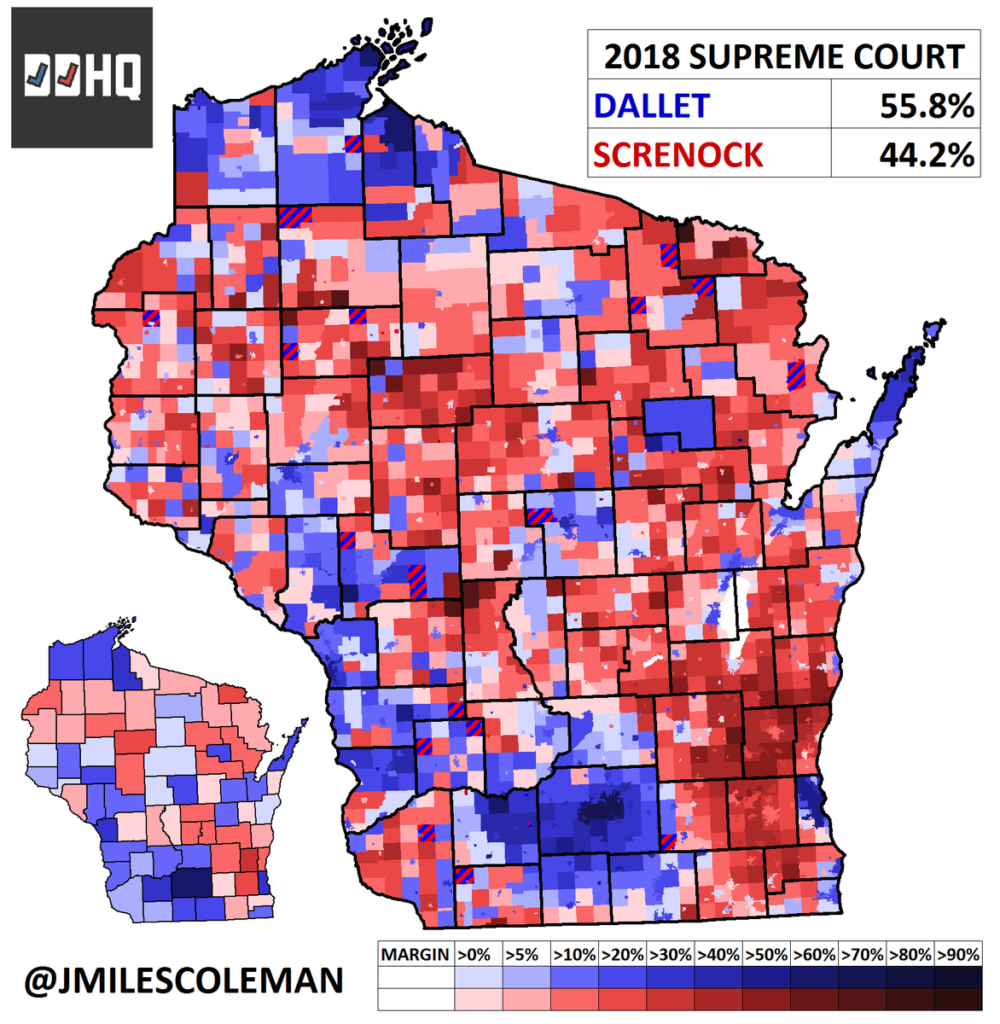Note: Supreme Court elections in Wisconsin are officially nonpartisan, but they have seen some of the fiercest ideological fights in the state, and activists on the left and right, along with their political party counterparts, have spent incredible time, energy and money on most contests since the late aughts. I will therefore describe justices in “liberal” and “conservative” terms to reflect who is backing them and clarify the implications of changes on the court.
The Wisconsin Supreme Court race of 2018 proved quite prescient on the fortunes of conservatives later that year, as they lost an open seat by double digits in a year that would see Republicans lose all statewide offices and several state legislative seats. However, conservatives retained a majority on the court, one they have held for over a decade.
This year, Judges Brian Hagedorn and Lisa Neubauer are running for retiring Justice Shirley Abrahamson’s seat. Abrahamson has served on the court since her appointment by Democratic Governor Patrick Lucey in 1976 and has been one of the more liberal members in her tenure.
In the current contest, Hagedorn is supported by conservative groups, Neubauer liberal ones, so a Hagedorn win pushes the conservative majority to 5-2 while a Neubauer win holds them to 4-3.
Hagedorn can lose the race without costing the conservatives their majority outright, but his loss this year will almost certainly doom them to minority status next year. Why? Because a judge appointed by former Republican Governor Scott Walker, Dan Kelly, faces the voters on the same day as the Democratic Presidential primary in 2020. There is no fierce battle on the Republican side, so most voters heading to the polls that day are going to naturally favor the liberal option in that judicial race.
Here are where both candidates stand in fundraising and endorsements:
Brian Hagedorn, $518,079 raised, endorsed by the Republican Parties of Milwaukee and Washington Counties.
Lisa Neubaeur, $747,347 raised, endorsed by former U.S. Attorney General Eric Holder, the National Democratic Redistricting Committee, and the WEAC.
Hagedorn faced two critical blows in fundraising and support in the past thirty days. The first came when the Wisconsin Realtors’ Association withdrew its endorsement and requested a return of its donation in February, followed today with word that the U.S. Chamber of Commerce is sitting this contest out. The Chamber and Realtors’ Association has played critical roles in recent high-profile contests, and their pull-out could signal a repeat of last year’s poor showing of conservative candidate Michael Screnock:

Conservatives had enjoyed a decades’ worth of improvements in what I like to call the BOW-WOW: Brown, Outagamie and Winnebago Counties along the Fox River, and the more famous Waukesha-Ozaukee-Washington trifecta of suburban Milwaukee Counties. The latter three, despite going slightly weaker for Trump in 2016, still broke over 2-1 for Republican candidates, and the former have grown increasingly Republican since the mid-aughts, casting for Scott Walker even in his failed re-election bid.
Screnock utterly collapsed in the BOW-WOW, losing the BOW handily and mustering comparatively lackluster margins around Milwaukee. While Walker and his Republican counterparts improved on this in the Fall, it wasn’t enough for them, and it remains to be seen if conservatives can reverse their misfortune in these critical six counties.
For election die-hards, the first thirty minutes will be revealing. We anticipate returns from Milwaukee, Dane, Rock, and the BOW-WOW all within that span. An early Neubaeur lead is expected, but if it’s substantial- and the BOW hasn’t changed from last year- that lead isn’t going to reverse. If, however, Hagedorn is posting “classic conservative” sky-high counts in Waukesha, Ozaukee, Washington, and is leading along the Fox River, there is a decent chance he is flipping the seat.
Decision Desk HQ will have live returns on April 2nd.